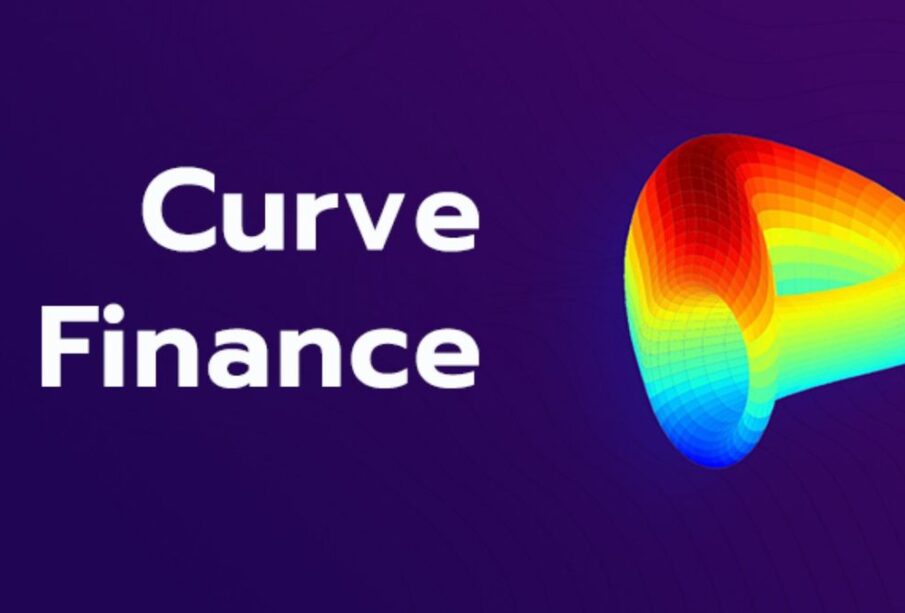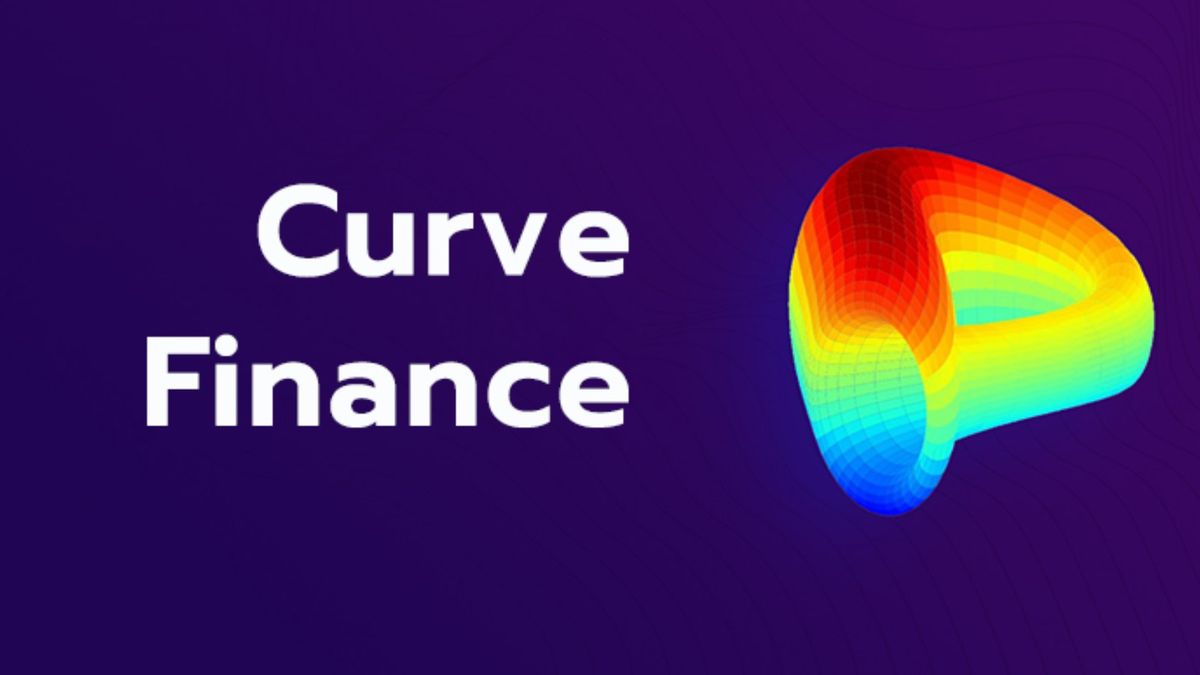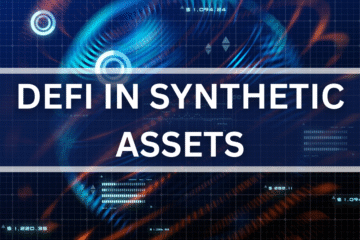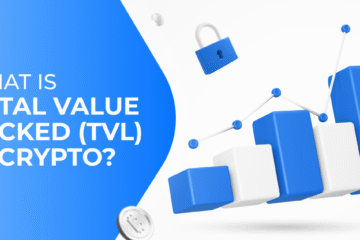What is Curve Finance?

Summary
Curve Finance is widely recognized as a decentralized exchange (DEX) focused on stablecoin trading. By refining the constant product market maker (CPMM) and constant sum market maker (CSMM) models, Curve offers users low-slippage, low-fee, and low-impermanent-loss trading for stablecoins.
Through its innovative VeToken model, Curve has sparked a competitive race among projects to accumulate $veCRV and vie for governance control within the Curve DAO. This struggle aims to secure influence and deliver higher yields for users, establishing Curve as a benchmark for protocol token economics. Curve’s ecosystem has also fueled the growth of related protocols like Convex, creating a virtuous cycle of value. With plans to launch its own stablecoin and expand its ecosystem, Curve continues to show immense potential for the future.
1. Introduction to Curve
Curve Finance, founded by Michael Egorov and launched in January 2020, is a decentralized exchange (DEX) built on an automated market maker (AMM) framework, primarily focusing on stablecoins (e.g., USDT, USDC, DAI) and synthetic/derivative/pegged assets (e.g., wBTC, renBTC, stETH). While Ethereum remains its primary hub, Curve has expanded to multiple chains, including Fantom, Polygon, Avalanche, Arbitrum, and Optimism.
In August 2020, Curve established the Curve DAO and issued its native token, $CRV. Since then, the protocol’s total value locked (TVL) has steadily grown, briefly making it the largest DEX by TVL, peaking at over $24 billion earlier this year. According to DeFiLlama, despite a turbulent year for crypto, Curve’s TVL remains among the top DeFi protocols at approximately $4.1 billion, with daily trading volumes around $200 million.
DeFi Protocol TVL Rankings
Curve consistently ranks among the top DeFi protocols by TVL, reflecting its strong position in the market.
Curve Protocol TVL and $CRV Market Cap Trends
The protocol’s TVL and $CRV market cap have shown resilience, maintaining significant value despite market fluctuations.
1.1 Curve’s Automated Market Maker Design
Curve was initially designed for stable asset trading, as outlined in its whitepaper, StableSwap – Efficient Mechanism for Stablecoin Liquidity. Its AMM strategy enables fast, low-cost, and low-slippage trades between stablecoin pairs.
1.1.1 Introduction to AMMs
Automated market makers (AMMs) are the backbone of decentralized exchanges (DEXs). Uniswap pioneered the AMM era with its constant product market maker (CPMM) model, defined by the formula xy=k*. This simple mathematical rule enables token swaps without centralized custodians, allowing anyone to become a liquidity provider (LP). In this model, x and y represent the quantities of two tokens in a liquidity pool, and their product k remains constant regardless of trades, forming an inverse curve.
Constant Product Market Maker Model
The CPMM model creates a curved relationship between token quantities, balancing liquidity dynamically.
Despite Uniswap’s breakthroughs, the CPMM model has flaws, including slippage and impermanent loss.
1.1.2 Impermanent Loss
Impermanent loss occurs when liquidity providers (LPs) add assets to an AMM pool, and price changes cause the pool to rebalance by selling appreciating tokens to maintain the preset ratio. This results in a loss compared to simply holding the assets.
For example, consider an ETH-USDT pool where 1 ETH = 100 USDT. An LP deposits 10 ETH and 1,000 USDT, making the constant k = 10 * 1,000 = 10,000, with a total pool value of 2,000 USDT. If ETH’s external price rises to 400 USDT, arbitrageurs trade ETH for USDT until the pool’s price aligns, leaving 5 ETH and 2,000 USDT (k remains 10,000). The pool’s value is now 4,000 USDT. However, holding 10 ETH and 1,000 USDT outside the pool would yield 5,000 USDT, creating an impermanent loss of 1,000 USDT.
1.1.3 Slippage
Slippage is the difference between a trade’s expected and actual execution price. Due to crypto’s volatility, prices fluctuate based on trading volume and activity. Pools with low liquidity or sudden large trades are prone to slippage. The slippage percentage reflects how much an asset’s price shifts during a trade and indicates a user’s tolerance for it.
The constant sum market maker (CSMM) model, defined by x+y=k, addresses slippage by maintaining a fixed total of two assets, represented by a straight line. The price, calculated as Price = dy/dx, stays close to 1, minimizing slippage for stablecoin trades where price changes are near zero.
Constant Sum Market Maker Model
The CSMM model eliminates slippage risk and stabilizes prices but is vulnerable to liquidity depletion. If off-chain prices diverge from the pool’s, arbitrageurs can drain one asset, destabilizing the pool. Thus, CSMM is rarely used.
1.1.4 Curve’s Optimized AMM
To address CPMM’s high slippage and CSMM’s liquidity risks, Curve’s AMM blends both models to create concentrated liquidity, reducing slippage within a given trading range. Near the equilibrium point, Curve’s curve is flatter, resembling a constant sum function for stable prices, while the ends slope like a constant product function, ensuring liquidity at all points.
Curve AMM Model vs. CPMM and CSMM
Curve’s hybrid AMM balances stability and liquidity, offering a superior trading experience.
1.2 Curve vs. Uniswap
As the two most-used DEXs, how do Curve and Uniswap compare?
Comparing Uniswap’s overall performance to Curve’s is unfair, as Uniswap is permissionless and supports unlimited liquidity pools, while Curve’s pools require community votes. Instead, we can compare efficiency, slippage, volatile asset pairs, and synthetic asset trading.
1.2.1 Efficiency and Slippage
Curve specializes in stablecoin swaps, offering lower costs. Its mechanism and partnerships enable more stablecoin and synthetic asset pools. Most stablecoin pairs trade directly on Curve, while Uniswap may require two trades (e.g., Stablecoin 1 to ETH, then ETH to Stablecoin 2), doubling fees. By limiting pool types and assets, Curve minimizes impermanent loss from volatile price swings. However, some pairs, like USDT and yUSDT, cannot be swapped directly.
1.2.2 Stablecoin Market
Before Uniswap V3, Curve dominated stablecoin trading with lower slippage, deeper liquidity, lower fees, and less impermanent loss. Uniswap V3 introduced concentrated liquidity, allowing LPs to set price ranges, optimizing fees. As a result, Uniswap has slightly overtaken Curve in stablecoin market share.
Curve vs. Uniswap Stablecoin Trading Share Trends
Uniswap’s share has grown, but Curve remains a strong contender.
1.2.3 Volatile Assets
Stablecoins account for only 14% of Uniswap V3’s trading volume over the past year. While Curve V2 improved volatile asset trading, Uniswap dominates major pairs like BTC/ETH.
1.2.4 Synthetic Assets
Curve excels in synthetic assets like stETH, sETH, and renBTC, offering ample liquidity. It captures 65% of stETH’s daily volume (vs. Uniswap’s 2%) and 84% of renBTC’s (vs. Uniswap’s 14%). This stems from partnerships, such as with Lido for stETH and Synthetix and Ren for sETH and renBTC. However, synthetic assets represent less than 2% of Curve’s daily volume compared to Uniswap’s total volume, making their impact minor.
1.2.5 Protocol Revenue
Curve charges a uniform 0.04% swap fee and 0%–0.02% deposit/withdrawal fees. Uniswap V3 allows customizable fees. According to cryptofees.info, Uniswap averages $650,000 in daily revenue, while Curve averages $60,000. Uniswap’s revenue goes entirely to LPs, with no benefits for $UNI holders, whereas Curve allocates 50% of its revenue to $CRV stakers.
Curve Protocol Recent Revenue Trends
Curve’s revenue model rewards $CRV stakers, enhancing its token’s value.
In summary, both Curve and Uniswap are leaders, but their strengths differ. Uniswap edges out in stablecoin trading and dominates volatile assets, while Curve leads in synthetic assets and offers unique value to $CRV holders.
2. Curve Ecosystem
Many still view Curve solely as a stablecoin trading platform, but it has evolved into a robust, DAO-governed protocol providing liquidity-as-a-service. Projects embrace Curve’s ecosystem to reduce liquidity costs, driven by its exemplary token economics.
2.1 $CRV Token
In August 2020, Curve launched its DAO and issued $CRV, its governance token, with an initial supply of 1.3 billion and a pre-mined reward distribution unlocking linearly over one year. $CRV grants voting rights, and LPs earn $CRV based on their pool share and duration. Since September 2020, 50% of trading fees are distributed to $CRV stakers locked in governance contracts.
The total $CRV supply is 3.03 billion, with over 1.5 billion released and approximately 1.08 million $CRV emitted daily. The allocation is:
- 62% to LPs, with 5% to early LPs (unlocked linearly over 1 year)
- 30% to shareholders (unlocked over 2–4 years)
- 5% as burnable community reserves
- 3% to team members (unlocked over 2 years)
$CRV Token Supply Allocation and Schedule
The structured release supports long-term ecosystem growth.
$CRV serves multiple roles:
- Governance Voting: Locking $CRV yields $veCRV for time-weighted governance participation.
- Value Capture: $veCRV incentivizes liquidity pool participation.
- Locking Incentives: LPs earn more over time.
- Fee Burning: Reduces inflation by burning transaction fees.
2.2 $veCRV Token
Curve’s VeToken (Vote-Escrowed Tokens) model allows $CRV holders to lock tokens for $veCRV, with longer locks yielding more $veCRV (e.g., 1 $CRV locked for 4 years yields 1 $veCRV; 1 year yields 0.25 $veCRV). $veCRV is non-transferable, and 48.94% of $CRV is locked, with an average lock period of 3.6 years.
$CRV Locking Rules for $veCRV
The longer the lock, the greater the voting power.
$CRV Locking Status
Nearly half of $CRV is locked, reflecting strong governance participation.
$veCRV has three main uses:
- Trading Fees: 50% of Curve’s 0.03% fees (excluding the 50% to $3Crv LPs) are distributed to $veCRV holders as $3Crv (Curve’s 3Pool LP token: DAI+USDC+USDT).
- Boosted Rewards: $veCRV holders providing liquidity can earn up to 2.5x rewards (e.g., 3Pool’s base APR of 0.22% can rise to 0.55%).
- Governance Voting: $veCRV holders vote on “gauge weights” to allocate $CRV rewards across pools, influencing liquidity incentives.
$veCRV holders may also receive airdrops from partner projects.
$CRV Value Capture Mechanisms
The interplay of $CRV, $veCRV, and fees drives Curve’s ecosystem.
Governance voting is $veCRV’s core function. Stablecoin projects need deep liquidity and low slippage to thrive. Curve, as the premier DEX for stablecoin market-making, requires projects to secure $veCRV for pool inclusion (e.g., 2,500 $veCRV to propose a pool, equivalent to locking 10,000 $CRV for 1 year, with 30% participation and 51% approval). Pool incentives depend on $veCRV votes, fueling demand for $CRV and sparking the “Curve Wars.”
3. Curve Ecosystem Advantages
The Curve Wars refer to projects competing to accumulate $veCRV and gain governance influence in the Curve DAO, aiming to maximize user yields. Pools with higher yields attract more LP funds, enhancing liquidity depth and reducing slippage, creating a virtuous cycle.
As the largest stablecoin liquidity hub, controlling Curve’s governance via gauge weight voting directs $CRV incentives, steering platform liquidity. High $veCRV ownership allows setting metapools or new base pools (e.g., 3Pool: USDT+USDC+DAI), which benefit from universal recognition and indirect liquidity subsidies.
Projects seeking deep liquidity must amass $veCRV to secure more $CRV rewards, ensuring robust trading depth for their tokens. Daily $CRV emissions for liquidity incentives are allocated via the DAO’s “Gauge Weight Voting” module, where $veCRV holders determine the next week’s reward distribution.
Gauge Weight Allocation
Higher allocations draw more liquidity to pools.
Participants in the Curve Wars include stablecoin projects, yield aggregators like Yearn Finance, and Convex, a protocol simplifying Curve’s LP and $CRV staking. Convex offers a user-friendly interface, allowing $CRV staking and reward claiming without time-weighted locks. Bribe platforms like Bribe.crv and votium.app facilitate vote-buying, intensifying the wars.
Convex holds the largest $veCRV share (42%), dominating Curve’s governance and gauge weight decisions.
Convex’s Rising $veCRV Share
Convex’s dominance reflects its strategic success in the Curve Wars.
4. Convex
Convex Finance is a one-stop platform for $CRV staking and liquidity mining, acting as an Ethereum-based yield aggregator. $CRV holders can stake on Convex for $cvxCRV (1:1 with $CRV), earning equivalent $veCRV rewards plus $CVX bonuses without locking $CRV. Convex gains full $veCRV governance rights, controlling 42% of $veCRV to dictate pool incentives.
4.1 CVX Token Economics
$veCRV: Curve Control
$veCRV, obtained by locking $CRV, captures Curve’s value and governance rights.
$cvxCRV: Delegating $CRV to Convex
$cvxCRV mirrors $CRV 1:1 on Convex. Staking $CRV for $cvxCRV sacrifices direct $veCRV voting but yields:
- 50% of Curve’s trading fees (as $3Crv)
- 10% of Convex’s $CRV LP rewards
- Additional $CVX rewards
Converting $cvxCRV back to $CRV requires secondary market trading, as it’s irreversible.
$CVX: Convex Control
$CVX, Convex’s native token, has a 100 million cap, with 50% for Curve LPs and 25% for liquidity mining. Locking $CVX for 16 weeks yields $vlCVX, granting governance over Convex’s $veCRV allocation.
$CVX Allocation
The distribution incentivizes platform participation.
$veCRV, $cvxCRV, $CVX Relationship
Convex attracts $CRV with $cvxCRV incentives, stakes it for $veCRV, and redistributes rewards to $cvxCRV and Convex LP holders. $CVX governs Convex, indirectly influencing Curve’s pools.
Convex Value Capture
Controlling $CVX equates to controlling Convex, which controls Curve’s liquidity incentives, attracting stablecoin projects and bribe offers.
Convex, a specialized Curve asset manager, rivals broader DeFi protocols like Yearn Finance in performance.
Convex DAO $CVX Holdings Rankings
Convex’s governance attracts significant project interest.
5. Curve Stablecoin
Recently, Curve released a draft whitepaper and code for its stablecoin, $crvUSD, to counter $CRV shorting. Like MakerDAO’s $DAI, $crvUSD is a collateralized stablecoin pegged to the USD, backed by volatile assets. Its innovations include the Lending-Liquidating AMM Algorithm (LLAMMA), PegKeeper, and monetary policy.
5.1 Why Stablecoins?
Curve dominates stablecoin liquidity, but why so many stablecoins? Traditional currencies serve as mediums of exchange, stores of value, and units of account. While Bitcoin resembles gold, most cryptocurrencies are volatile like stocks. Stablecoins, mimicking fiat, are safe havens for conservative investors in volatile markets.
Stablecoins enable efficient trading and DeFi participation (e.g., lending, staking). Their utility depends on stability and use cases. Types include:
- Fiat-backed: E.g., Tether’s $USDT, Circle’s $USDC
- Crypto-collateralized: E.g., MakerDAO’s $DAI, minted via over-collateralized crypto
- Algorithmic: E.g., Ampleforth ($AMPL), Basis Cash ($BAC), $UST, using elastic supply to maintain pegs
5.2 Curve Stablecoin Mechanisms
5.2.1 LLAMMA: Real-Time Liquidation
DeFi lacks credit-based lending, relying on over-collateralized platforms like AAVE and Compound, which are capital-inefficient and prone to liquidation. $crvUSD’s LLAMMA (Lending-Liquidating AMM Algorithm) mitigates this by gradually liquidating/rebalancing collateral.
For example, borrowing $crvUSD with ETH collateral triggers gradual ETH sales if ETH’s price falls into the liquidation range, converting to $crvUSD. If ETH rises, LLAMMA buys back ETH. This dynamic process prevents abrupt losses.
LLAMMA links depositors’ stablecoin pools and borrowers’ collateral pools via AMM, with built-in liquidation mechanisms to avoid bad debt.
5.2.2 PegKeeper: Automatic Stabilizer
$crvUSD’s price is pegged near $1 with collateral backing. To counter secondary market fluctuations, PegKeeper mints $crvUSD without collateral when prices exceed $1, depositing it into swap pools to lower prices. When below $1, it withdraws $crvUSD to raise prices, profiting while stabilizing the peg.
5.2.3 Monetary Policy
Like the Federal Reserve’s interest rate adjustments, Curve’s monetary policy manages $crvUSD’s debt-to-supply ratio. When debt exceeds 5%, parameters incentivize borrowing and selling $crvUSD, burning debt. When low, it encourages loan repayments, increasing debt.
5.3 Ecosystem Impact
$crvUSD strengthens Curve’s ecosystem. The team’s significant $veCRV holdings can guide $crvUSD liquidity










